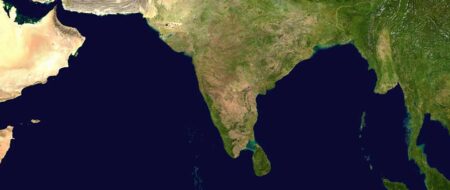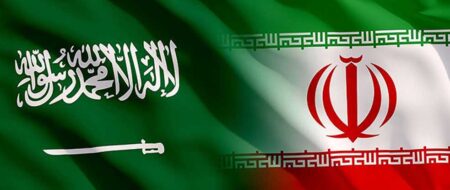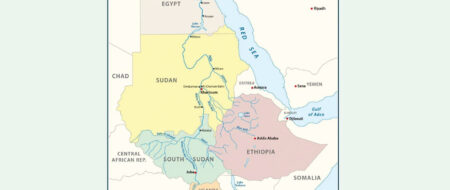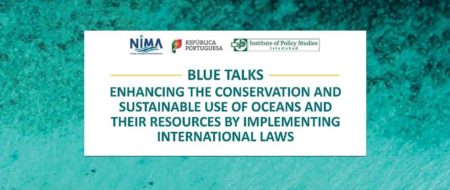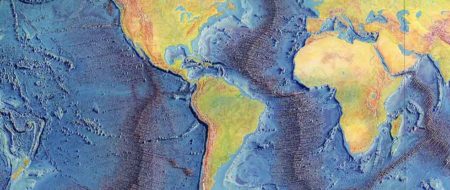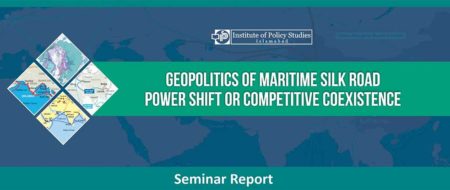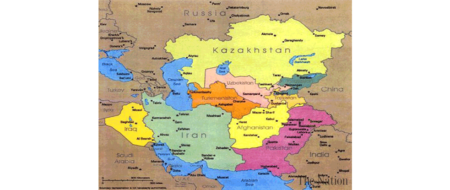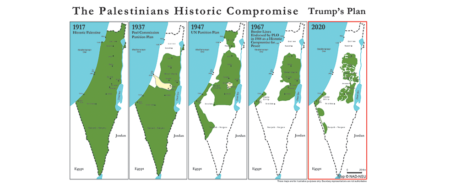Global peace and justice: An Islamic perspective
|
Q |
uest for peace and justice is perhaps a core issue and a major shared aspiration in most of the world religions. However, a more realistic analysis will show that even for the Secularist thinkers peace has been a major concern, though, their basic assumptions and the motivating force behind it may be totally different. The post-capitalism mind set, with its deep commitment to economic development, individualism and ethical relativism, gradually developed a belief that war, can not help, in the long run, in achieving the social and economic targets of the industrialized world.
Pacifism, in due course, as an individual commitment to non-violence was projected further and extended to other areas of concern. The strategic use of armed conflicts and wars, directly related with the capitalist urge to control sources of raw material and to create markets for its products, was reconsidered. A new strategic thinking put forward the thesis that peace and pacifism can also pave the way for free trade movement and help the capitalist powers in achieving their objectives, for which, conventionally, bloody wars were waged.
In the post-world wars era, a functional approach of trade, travel, and democracy was considered as basis for internationalism. In an era of search for peace, efforts were made to avoid physical wars, considered enemy of free trade and travel. The age of cold war offered new opportunities for development of regional economies, mutual understanding, and nuclear deterrence. Emergence of the institution of United Nations, theoretically, was materialization of pacifism at a global international level. Leaving aside the success or failure of this international body, its major role was supposed to be facilitation of peaceful resolution of conflicts. Peace making and keeping peace became an article of faith for this proud secular institution and its member states.
Peace movement and non-violent resistance movements, at an historical level, included not only democratic struggle for the liberation of people from the exploitation and oppression of imperialist and colonialist powers of Europe. It also included movements such as the one for gender equity. Though women’s liberation movement in the West called for equal rights for women and not for an equitable role for them, it did not become
violent and remained a peaceful movement. At the political front, movements for democratization of society, sometimes remained peaceful, while at others, turned out violent. Nevertheless global movements for peace or resolution of conflicts, without use of military power, with their basic secular character, kept working for creation of a better human environment. The Helsinki process or the movement for a Nuclear free world is an example of this secularist concern for peace.
Persons with profound and obvious religious affiliations, on the other hand have been often blamed for instigating extremism, fundamentalism, violence, terrorism and bloodshed. For several decades Catholics and Protestants in the Northern Ireland were blamed for religious violence, fundamentalism and extremism. The fact however remains neither Catholicism nor Protestantism endorses such violence and bloodshed. Similarly the ethnic cleansing by Croats and Serbs and their terror against the Bosnian Muslims could not be regarded a true reflection of pristine Christianity. We have reason to believe that conscientious, honest and ethically committed Jews, never support the naked violence and brutality committed by the Zionists against the indigenous Muslims and Christians in Palestine. The refusal of a number of Israeli pilots to target Palestinian townships, shows that not all Jews support Zionist terrorism in Palestine. This brief review shows that peace enjoys enormous importance among the secularists as well as among religious persons, and violence can not be justified in the name of religion.
Peace initiatives and peace process are generally associated with peaceful settlement of disputes; concern for collective security; disarmament; preventive diplomacy and functionalism. Disputes and disagreements whether political, economic or ideological have been generally settled either through use of might and power or through negotiations, i.e. brain power, mediation, face to face interaction and dialogue. Peace initiatives provide a forum for this purpose.
Concern for collective security generally leads to bilateral and multi-lateral relations which further leads to regional or global peace process. While disarmament refers to, particularly efforts to check arms imbalance and containment of nuclear weapons, proper disposal of nuclear waste, and voluntarily avoiding an arms race are inalienable dimensions of that. It also prepares the ground for better future for peace in the world. Preventive diplomacy through direct involvement of agencies such as U.N. also offers a viable option for peace. Though unilateralism of the US imperialism, particularly its invasion and unlawful occupation of Iraq, has seriously dented, rather announced demise of this role of the U.N. Failure of such prestigious institution does not frustrate us. This on the other hand strengthens our belief that a phenomenological approach in which intellectuals, religious leaders, and those involved in policy planning, through their collaborations on current international economic, social and political issues, can create a better environment for an on going dialogue, mutual confidence building and development of a non-violent global psyche.
Where do the living religions stand in this contemporary discourse on peace? More specifically how Islam looks on peace, calls for a rather dispassionate search for the meaning and relevance of peace in the texts of the Qur’an and the Sunnah.
Etymologically the term Islam draws its origin from the Arabic root slm which literally means peace and acceptance of servitude to Allah swt or to surrender to His Authority as the Ultimate. If this is so why a global uproar about the so called “bloody doctrine” of Holy war or “Islamic Jihad”. It may sound naïve nevertheless a major cause for this misconception is the fictional image created by electronic media and journalistic writings of a group of orientalists, neo-con intellectuals and free lance lobbyists. To take one example, we refer to Judith Miller’s God has Ninety Nine Names: Reporting from a Militant Middle East. As a correspondent of New York Times, without having lived much in the Middle East and with no working knowledge of Arabic language, she writes authoritatively on Islam. Edward Said while reviewing her book says “what matters to “experts” like Miller, Samuel Huntington, Martin Kramer, Bernard Lewis, Danial Pipes, Steven Emerson and Barry Rubin, plus a whole battery of Israeli academics, is to make sure that the “threat” is kept before our eyes, the better to excoriate Islam for terror, disposition and violence, while assuring themselves profitable consultancies, frequent T.V. appearances and book contracts. Similar effort is made in Stephen Schwartz’s The Two Faces of Islam: the House of Saud from Tradition to Terror;[1] it is a search for “demons” and a call to slay “dragons”, which only exist in the fantasy of the author.
One apparent reason for such projections of Islam, perhaps, as mentioned above, is projection of Jihad as a weapon for elimination and destruction of all non-Muslims and their civilizations. The tragic event of 9/11 rather re-enforced this centuries old misgiving about Islam as a violent faith. Muslim responses, in general, thanks to being apologetic or reactionary, neither helped in capturing the real meaning and purpose of Jihad nor could be useful in dispelling these allegations. Consequently misreading the intent, purpose and method of Jihad, easily leads one to equate it with violence.
Violence is generally defined as purposeful use of force in order to hurt, insult or injure someone. This is why a remote control device when used to hurt or kill anyone is regarded an act of violence and terror. However, we always differentiate between physical injury with an intention to cause pain or harm and the same action with an intention to improve, repair, and make life better for a person, such as the use of surgical tools by a dentist in extracting tooth or the use of knife by a surgeon to save a patient’s life. It is in this context that jihad, in the Qur’an, is projected as an instrument for realization of peace and justice in society, and at the same time a tool for checking and eliminating lawlessness, oppression and exploitation.
Those who choose an apologetic course of argument often draw a line between the so-called defensive and offensive dimensions of Jihad. They make frequent reference to a later classification of the world as darulharb (abode of war) or darul Islam (abode of peace). They Go to the extent of saying that Jihad being essentially defensive, does not permit to go to war against anyone. On the other hand, some Muslims talk about Jihad as a total war against whatever they consider un-Islamic. While both interpretations may contain elements of truth neither one comprehends the concept in its totality.
If we look directly into the Qur’an, as the ultimate source of Islamic teachings, we find the term Jihad is used in around forty places in the Qur’an while the term qital appears around one hundred sixty seven times in one or another context. While jihad in its Qur’anic sense refers to struggle, concerted effort, and an ongoing endeavor, in order to achieve an objective, the term qital simply means fighting or war in its wider connotation.
The purpose and intent of jihad as defined by the Qur’an is to liberate people from oppression, injustice, exploitation, slavery and bondage or restoration of human rights of a people. Although the focus in several places is on the Muslims, it is not correct to confine it to restoration of human rights of Muslims only for the simple reason that the Qur’an uses the word mustad‘afin or those who are ill treated and oppressed, and exhorts Muslim to fight for the cause of their liberation. “And why should you not fight in the cause of Allah and of those who being weak are ill-treated (and oppressed) men, women and children, who cry Our Lord rescue us from this town whose people are oppressors and raise for us from Thee one who will protect and raise for us from Thee one who will help” (an Nisa 4:75).
Elsewhere the Qur’an includes specifically followers of at least three different faiths whose places of worship have to be protected by the Muslims as an obligation and in order to uphold human rights. “For had it not been for Allah to check one set of people by means of another; these would surely have been pulled down Monasteries (temples), Churches, Synagogues and Mosques, in which name of Allah is commemorated in abundant measure, Allah will certainly help those who help His Cause, for verily Allah is full of Strength exalted in Might. (al-Hajj 22:40)
Jihad consequently, in the Qur’an, stands for a movement of protection of human rights, freedom, and dignity of man. It does not call for a “holy war” against the “infidels”. The term “holy war”, which in Arabic would mean harb al muqadas, practically does not exist in the vocabulary of the Qur’an and the Sunnah. Similarly peace (amn, salam, sulh) in the Islamic Tradition is not an antonym of war. It stands for a culture of peace, tolerance, mutual understanding and an ongoing systematic cultural and civilizational discourse and dialogue. Addressing the whole of humanity as a single Ummah the Qur’an invites all humans to cultivate an attitude of peace “And Allah summons to the abode of peace, and leads whom He will to a straight path” (Yunus 10:25). The word peace in its different forms appears in around one hundred and thirty eight places in the Qur’an.
The culture of peace, as visualized by Islam, is not limited to a formal understanding of concept of disarmament, collective security or peace as functionalism. Islamic view of peace is comprehensive; it is more than a no-war situation. Without going into details the Islamic understanding of peace can be summarized in seven points which provide a practical basis for a global order of peace.
Tawhid: Needless to say, peace and justice, as recurring themes in the Qur’an enjoy a central place in the Islamic scheme of thought. Their manifestations take place at individual as well as collective levels. The concept of peace in the Qur’an also appears directly linked with the principle of tawhid,, often considered a theological issue. Tawhid being the be-end and be-all in the Islamic framework of thought implies conscious removal of conflict and contradiction in one’s conduct, attitude, behavior and in social transactions. The coherence, cohesion and unization thus achieved at individual level becomes a major effective and authentic source for peace. Once consciously internalized, tawhid deters a person from using double standards while interacting with members of family or business partners as well as when entrusted a public responsibility. Systematic elimination of internal contradictions and development of coherence in thought and actions paves the way for existential peace. Tawhid or observance of One ultimate cosmic principle, operating at cosmic level and in the human realm, makes this principle relevant and agreeable even for persons who may not profess to be Muslim. Unization in thought and action thus acquires status of a global viable solution for resolving conflict at individual and social levels.
‘Adl: This leads us to the second central Islamic principle, viz ‘adl or equity and justice, which provide basis for peace in society. The Qur’an refers to at least seven important dimensions of ‘adl which lead to meaningful peace in society. First and foremost is the rule of law and equality and value of human life. Realization of rule of law cuts across different sections of society. Law does not discriminate between Muslims and non-Muslims in the basic human rights. Life, honor, property and security of non-Muslim citizen is as much valuable as that of a Muslim. Protection and promotion of life becomes a primary value. It under scores that peace in society is only possible when protection of human life is given highest priority. Its promotion and protection of human life offers a solid foundation for peace, security and a sustainable society. The Qur’an not only condemns manslaughter, as, it claims, was done in preceding religious traditions, it declares killing one human soul unjustly as killing the whole of humanity and protecting one single life equal to giving life to the whole of humanity (al-M’aidah 5:32). The Prophetic commands even prohibiting unjust violation of life of plants, birds, animals etc. indicates Prophet’s concern.
This is followed by social and economic dimension which includes proper observance of rights and responsibilities of members of extended family, neighbors and even strangers. The Qur’an and the Sunnah, thus, put enormous emphasis on observance of huquq and faraid as a pre-requisite for peaceful life at a grass root level. It is only when a person honestly observes rights of the Creator and the fellow humans that may qualify a person to enter the abode of peace (dar al-salam) in the life hereafter. It calls for ethical conduct and behavior in social dealings in order to realize enduring peace in society. It also calls for ethical conduct in trade and economy. Financial corruption, and exploitation of property of citizens is considered a social evil and cause of crisis and insecurity in society. Taking a serious note, the Qur’an legislates strict punishment for theft (saraqah and harabah) in order to create security and peace as well as safe traveling for traders and businessmen. Practice of ethics in economic and financial matters is underscored by the Qur’an as a pre-requisite for peace and justice in society. Therefore it says “O you who believe squander not your wealth among yourselves in vanity, except it is for some business (trade) by mutual consent” (an Nisa 4:29 also al-Baqarah 2:188). Referring to quality control and standardization of measure it declares “Fill the measure when you measure, and weigh with a right balance, that is better and finest in the end” (Bani Isra’il 17:35)
While pleading for fair and transparent economic transactions, it condemns, with all possible force, economic exploitation in the form of riba or usury and interest which is regarded a major source of conflict and economic oppression in society by Islam.
Political liberty and freedom: Third dimension of justice relates with political liberty. Free participation in political process is recognized by the Qur’an as a human right of people. Political justice, right to association and disagreement, and power sharing thus becomes instrumental in realization of peace.
Rational behavior: Fourth important dimension of adl and a Qur’anic pre-requisite for global peace relates to inculcation of a rational and reasonable behavior in personal and social matters. Islam does not visualize creation of peace unless individuals and society, as such, adopts an attitude of fairness and reasonableness. Individual matters and social policies are to be decided keeping in view their moral consequences for individuals as well as society. Rationality is not a matter of personal justification but an objective exercise of principle of reason and intellect or ‘aql . A balance between the individual good and the social good (maslahah ‘amah) becomes the basis of durable and dignified peace.
Gender relations: Fifth, peace, in the Islamic framework is also linked with gender relations and sexual ethics. The Qur’an regards unethical sexual conduct as not only obscene but a major source of corruption, exploitation and unhealthy society. Unlike several world religious traditions Islam disapproves celibacy and, living life of a hermit or monk. It makes the family, society and state responsible for getting bachelors married (an Nur 24:32). It appreciates and encourages family life and rather large size of family and makes provision for remarriage of widowed. These measures help in avoiding sexual deviance and in creating peace and ethical environment in society.
Religious freedom and pluralism: Sixth important aspect of justice relates with the realm of religion. Religious freedom within the Muslim community and right to live by their religious teachings, for the non-Muslim citizens, is considered vital, by the Qur’an, for realization of peace (al-Baqrah 2:256).
Legal justice: Seventh major aspect of ‘adl relates with realization of legal justice without any discrimination based on religion, color, ethnicity, gender, race, or social status of a person (al-Ma‘idah.5:8). When Tawhid and ‘adl in this comprehensive connotation are established in society it makes peace viable and an existential reality.
Another important dimension relates to realization of a pluralistic society with recognition and respect of religious liberty. Its ecumenism allows within the Muslim community parallel existence of madhahib and masalik, or legal and theological interpretations. It also recognizes religious and human rights of believers of other faiths. Even a kafir (denier of Allah’s authority) has a right to live by what he believes (al-kafirun 109:1-6)
These seven dimensions of ‘adl (Justice)’, in essence, are not particular to the Muslim or to any specific time or space. These are universal ethical principles, which provide solid grounds for a global dialogue leading to realization of peace, mutual understanding and cooperation.
These principles also allow development of a pluralistic world with recognition and respect of religious liberty, respect and promotion of human life, transcendence of reason over dogmatism or rigid traditionalism.
Muslim philosophers of law and jurists particularly al-Ghazali ((d. 505/1111) and al-Shatibi (d. 790/1388) consider that five of the above seven principles are the basis of divine legislation in the Qur’an and the sunnah. Most of the commands, directives and teachings of the Qur’an are founded on one or more of these principles. Nevertheless universality of these principles, and their logical relationship with the two vital principles (usul wa asas) of Islam viz. tawhid and ‘adl’, makes their applicability and relevance meaningful for any one irrespective of culture and religious affiliation, an achievable target of sustainable peace and justice in society.
These seven principles, thanks to their universal application and non-parochial and non-sectarian nature, also offer a meaningful basis for a global peace dialogue with a transparent social agenda. Peace in the final analysis becomes a matter of socio-economic and political justice.
Secular fundamentalism on the other hand, with its commitment to situational and relativistic views of ethics, ultimately secularizes political, economic, social legal and educational institutions. Universal ethical values are substituted by a set of secular materialistic values. Peace and justice become situational and relative to individual judgment. A lack of consensus thus created in universal ethical values, leads to conflict and clash in society. Pluralism, justice, peace (internal as well external), become first victim of this secularization of space and time.
How to realize peace and justice at an existential level? Perhaps solution lies in forging a moral force in which persons with a religious orientation as well as those claiming to be secular, join hands against violence, denial of human rights and socio-economic injustice. A moral force consisting of intellectuals, religious leaders and professionals can be instrumental in creation of proper awareness about peace, it can also identify concrete steps needed for its realization at national and global level.
- · Prof. Dr. Anis Ahmad is Vice-Chancellor of Rephah International University, Islamabad. This is his working paper that he presented in international seminar on ‘Peace and Justice: The Religious Perspectives’ held in Islamabad on Jan. 15, 2004 under the auspices of IPS.
[1] Studies that present a distorted image of Islam and Muslims:
Schwartz, Stephen. (2002). The Two Faces of Islam: The House of Saud From Tradition to Terror. New York; Doubleday.
Lincoln, Bruce. (2002). Holy Terrorism: Thinking About religion After Sept. 11. Chicago University Press.
Levi, Bernard Henry. tr. Mitchell, Janes X. (2003). Who Killed Daniel Pearl? London; Duckworth.


